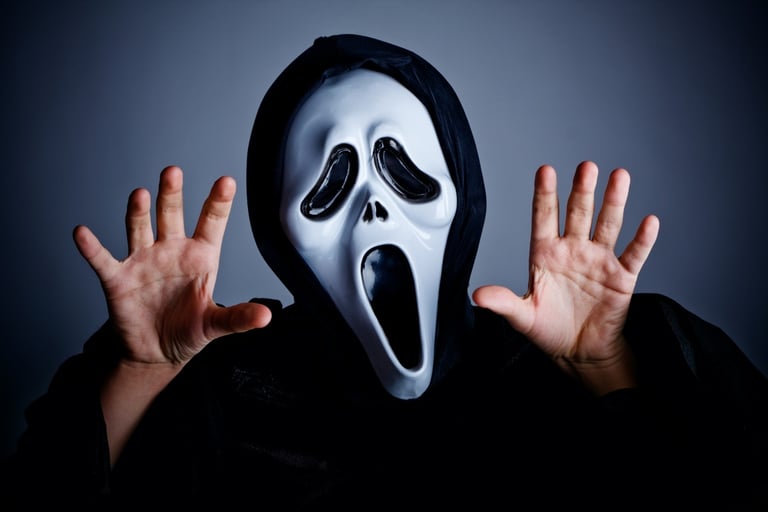
Halloween is here, and with it comes a wide array of spooky masks designed to scare the living daylights out of us. But to some people who fear or dread sleep apnea therapy, the CPAP mask is the creepiest of them all.
Why do some people with apnea dread wearing CPAP masks? Some have objections based on feel; they're not used to a mask or haven't found the right fit. Others suffer from anxiety and claustrophobia and don't like to have their noses or mouths covered.
However, many people dislike the CPAP mask for a less serious reason: they don't like the way it looks. Simply put, they find it creepy.
Boo! I'm Scared of My CPAP Mask
In a dark bedroom after watching a marathon of horror movies, it is possible to be startled when you see your apnea mask draped over the bedside table or headboard. In the right light, you might mistake it for a ghost in a gas mask, or the long and twisty arms of the clown in "Poltergeist."
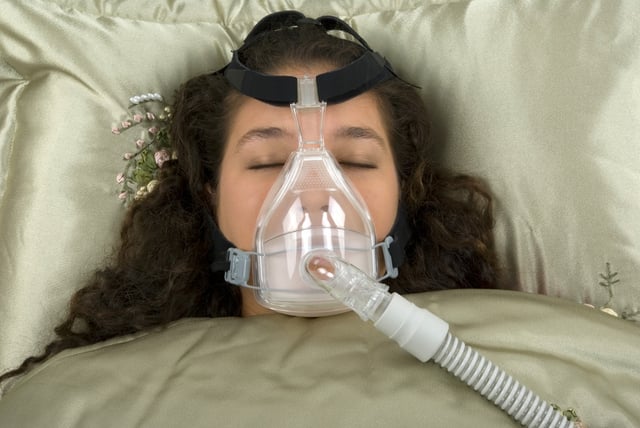
Creative? Sure. People get very imaginative when describing their CPAPs, especially around Halloween. Perhaps you've heard these comparisons. "My CPAP mask makes me look like . . .":
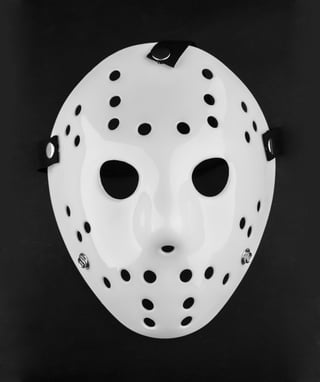 a deep sea diver.
a deep sea diver.- Snuffleupagus from "Sesame Street." (Surely, somebody somewhere finds him scary.)
- an alien or a character in a sci-fi film.
- a survivor of nuclear war or the apocalypse.
- a psycho, like Hannibal Lector.
- a serial killer (like Jason Voorhees from "Friday the 13th" or the ghostface killer from "Scream").
- Dennis Hopper in "Blue Velvet."
- Bane from "The Dark Knight."
- The evil warlord from "Mad Max."
And of course, everybody's favorite go-to for breathing masks:
- Darth Vader.
Yes, it's true, CPAP masks can look like something out of science fiction or fantasy. Like Darth Vader's helmet, they do make a steady respiration sound. And there is something intimidating and futuristic about wearing a device that's connected by tubes to a machine that helps you breathe.
But as scary-looking as apnea therapy machines may be, they're nowhere near as frightening as the effects of untreated obstructive sleep apnea (OSA).
Untreated OSA: The Real Horror Story
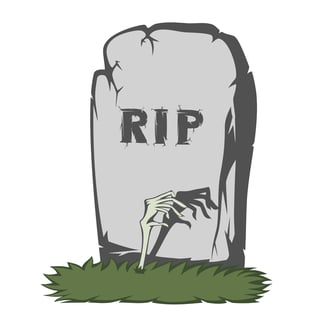 The long-term effects of untreated sleep apnea are more terrifying than any ghost story or horror movie. Not convinced? Consider this:
The long-term effects of untreated sleep apnea are more terrifying than any ghost story or horror movie. Not convinced? Consider this:
People with untreated sleep apnea stop breathing when they sleep — repeatedly. Sixty times per hour. . . 150
times per night. . . These are are actual numbers patients have been given after completing sleep studies.
If you have OSA, you cease breathing during the night, often dozens of times per hour.
In the old days before modern medicine, cessation of breath was considered a clear sign of death. (Remember the old trick of holding a mirror to someone's mouth to check for condensation?) By that measure, if you have untreated OSA, you become a zombie many times over every night (and you probably feel like one, too!)
Symptoms of untreated OSA can include:
- snoring
- daytime drowsiness and fatigue
- frequent nighttime awakenings for no reason (or to use the bathroom)
- waking up in the morning with drymouth, a headache, or a sore throat
- moodiness
- difficulty with attention and focus
- nightmares about drowning
These unpleasant side effects, though ghoulish, are nothing compared to the long-term health complications from untreated sleep apnea.
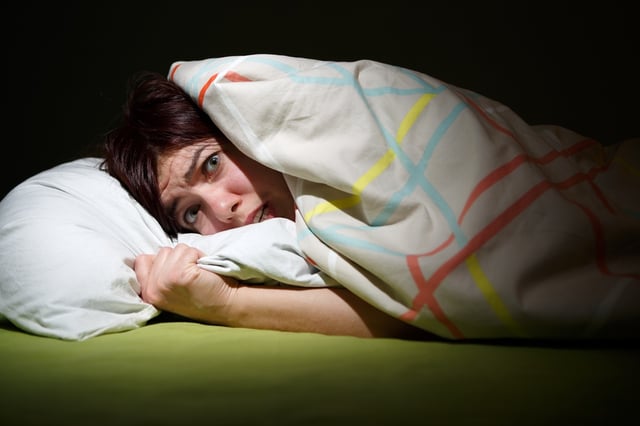
Untreated sleep apnea can contribute to many chilling side effects, according to The American Academy of Sleep Medicine (AASM), including:
- High blood pressure
- Heart disease (coronary artery disease, congestive heart failure, cardiac arrhythmia)
- Stroke
- Pre-diabetes and diabetes
- Depression
- Injury, such as motor vehicle accidents or workplace accidents, brought on by sleep deprivation
According to the AASM, people with apnea are "four times more likely to die when the sleep disorder is left untreated in the long term.”
Researchers also have published truly scary statistics about the effects of untreated apnea on cancer survival rates, surgery (hint: untreated apnea and anesthesia may be a bad combination), and kidney disease.
If the dangers to your physical and mental health don't fill you with terror, then think about your wallet: a study out of the University of Washington found that the annual healthcare costs for people with undiagnosed, untreated OSA are nearly twice those of someone without OSA.
If you've been diagnosed with sleep apnea and have a CPAP machine already, using it is a small price to pay for improving and protecting your health.
But I Don't Need a Mask — I Don't Have OSA
Are you sure?
If you haven't had a sleep study but you're more depleted than you ought to be, you may want to get yourself checked for a sleep disorder. Obstructive sleep apnea, the prevalent form of apnea, affects 1 out of 10 adults in the United States.
That's right: 1 out of 10 of us are zombies. And up to 80% of us have no idea we're at risk.
Now you know what happens if sleep apnea goes untreated. A CPAP mask isn't so terrifying after all — not when this is the alternative:
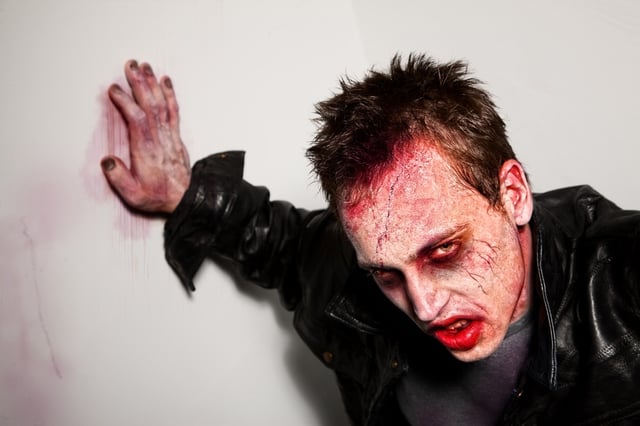 Exhausted zombie with no energy — he should have worn his apnea mask!
Exhausted zombie with no energy — he should have worn his apnea mask!









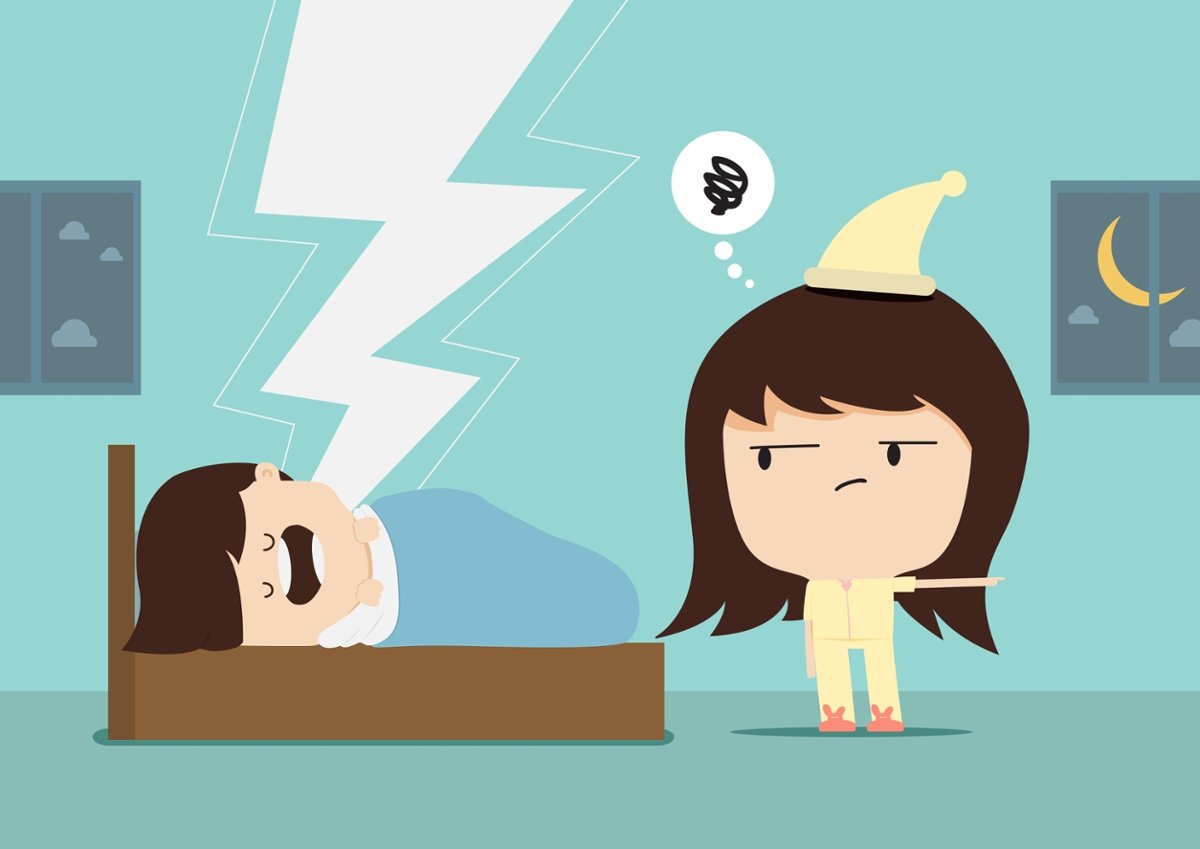

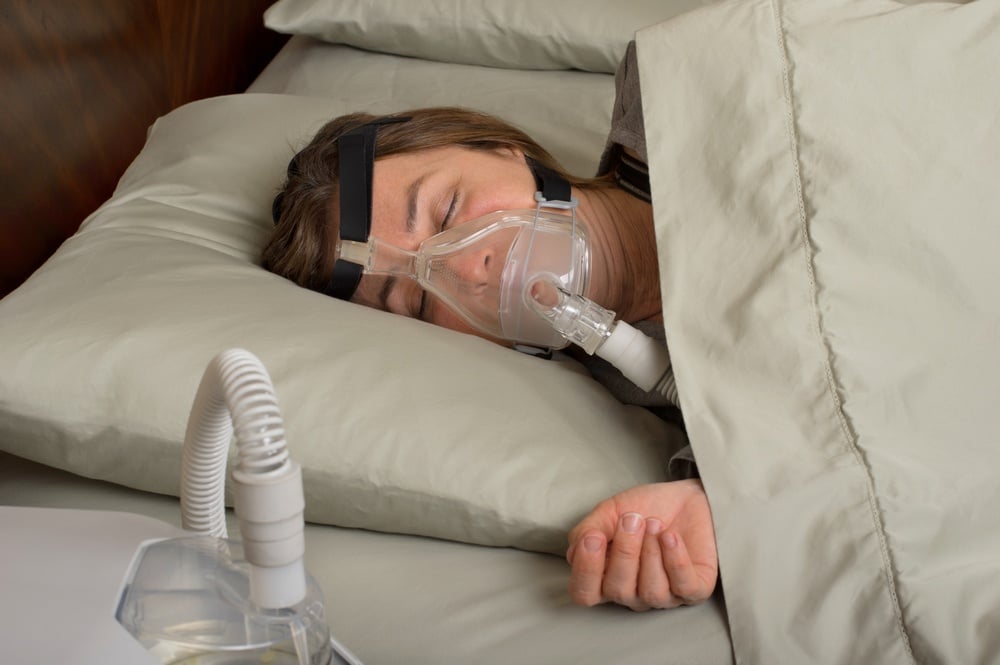
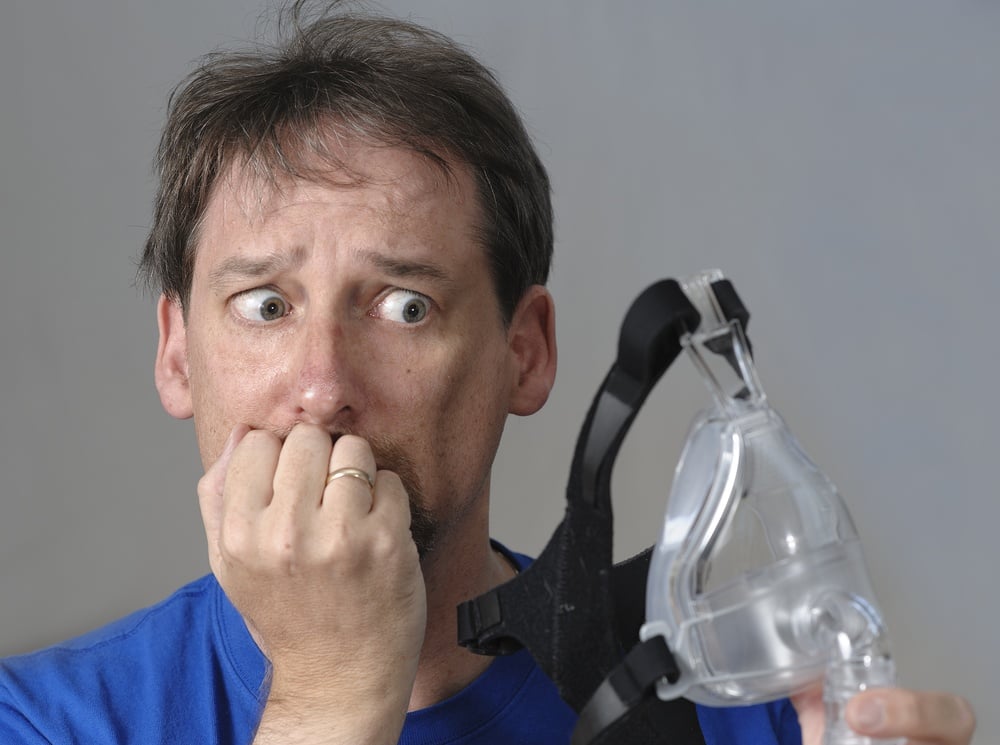
Leave a comment